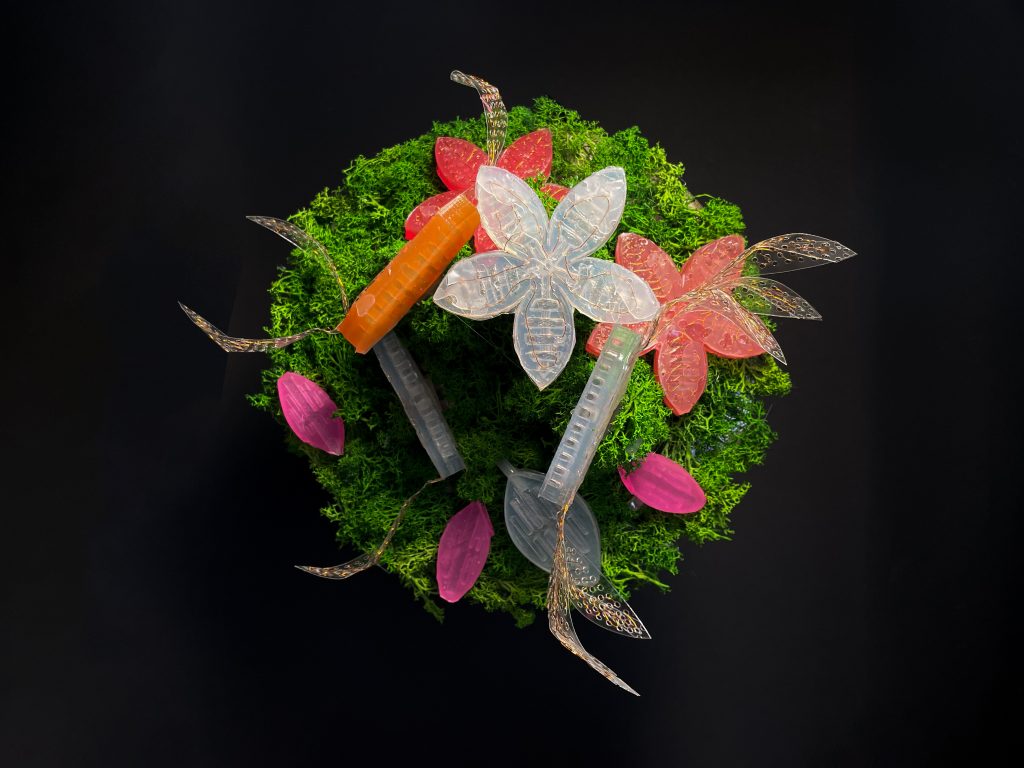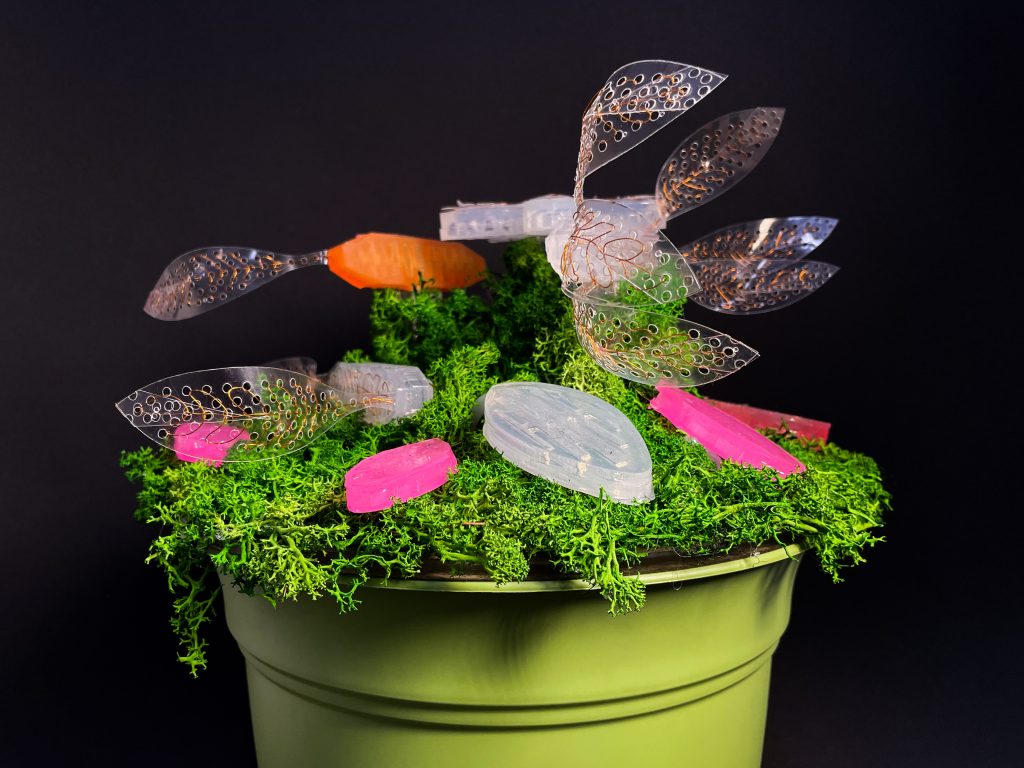Statement of Objectives
The objective of this project is to create a soft robotic sculpture that reflects the organic response of plants to external stimuli, specifically touch. The sculpture consists of silicone-based parts in the shape of flowers and venus fly traps, which are pneumatically actuated based on capacitive touch sensing. When the parts are touched, the motors activate and fill the silicone flytraps/flowers, creating the illusion of the plant bending inwards, as if closing into the touch. After a few seconds, the parts deflate and return to their original state.
The goals of this project are:
- To demonstrate the potential of soft robotics to create organic, lifelike movements that are inspired by nature.
- To explore the concept of passive response in plants and how it can be applied to robotics.
- To engage and educate the target audience about the capabilities of soft robotics and the ways in which they can be used in creative applications.
The target audience for this project includes individuals who are interested in robotics, art, and the intersection between the two. This includes artists, engineers, students, and members of the general public who are curious about the possibilities of soft robotics. By showcasing the sculpture in a public setting, the project aims to spark interest and conversation around the topic of soft robotics and its potential to transform our understanding of nature-inspired design.
Reflection
The use of soft robotics technology in the creation of the pneumatic sculpture provided a unique opportunity to explore expressive design and how technology can be used to create organic, lifelike movements. By utilizing silicone-based parts, the sculpture was able to mimic the soft, pliable nature of natural forms, such as flowers and Venus fly traps. The pneumatic actuation allowed for precise and subtle movements, which created an immersive and engaging experience.
The inclusion of the acetate element was primarily for the purpose of adding stiffness and introducing a new material that is somewhere in between hard and soft. The use of capacitive touch sensing to trigger the pneumatic actuation added an interactive element to the sculpture. By responding to touch, the sculpture created a sense of intimacy and connection with the viewer, as the movements of the sculpture were a direct result of the viewer’s actions. This aspect of the sculpture highlighted the potential of soft robotics to create expressive and interactive designs that engage and captivate audiences.
Furthermore, the use of soft technologies for expressive purposes in this project opens up a range of creative possibilities for future projects. Soft robotics technology has the potential to be used in a variety of expressive applications, from art installations to interactive toys, and can create lifelike and engaging movements that mimic natural forms. The technology also allows for a level of customization and flexibility that is difficult to achieve with traditional robotics, as the soft materials can be molded and shaped into a variety of forms.
Outcomes
Successes:
- The project successfully utilized soft robotics technology to create a unique and engaging sculpture that mimics the organic movements of plants.
- The use of silicone-based parts allowed for a lifelike and flexible appearance, which contributed to the immersive experience for the viewer.
- The capacitive touch sensing technology provided an interactive element to the sculpture and allowed for a direct connection between the viewer and the movement of the sculpture.
- We successfully implemented an FSM in circuit python to control the movement of the motors which resulted in varied inflating and deflating motions for the plants.
- The iterative design process led to the creation of some cool and unique silicone parts.
Failures:
- The range of motion for the Venus fly-trap as well as the flowers was limited.
- The use of acetate as a rigid and inflexible material for the leaves of the venus-fly trap resulted in a less organic and lifelike appearance for this part of the sculpture.
- The project did not fully explore the potential of machine learning algorithms to create more nuanced and lifelike movements.
- The project did not fully explore the use of alternative actuation methods, such as shape memory alloys or electroactive polymers, to achieve a higher range of motion for the venus fly-trap leaves.
Photographs




Citations
Technical Documentation
- Codebase: https://drive.google.com/file/d/1PW6Rl5aj-DYl_8-PLJQsC3fAFIf5Q_uT/view?usp=share_link
- CAD Flytrap: https://drive.google.com/file/d/1Xm4FTwDL6hjF1uotGPG8O9Ds15u_xU2T/view?usp=share_link
- CAD Flower: https://drive.google.com/file/d/1res6GHl9D_EOqtkSACYrhW3BDqG5zrRN/view?usp=share_link
Contributors
Aditti Ramsisaria:
- Mold design for fly-trap actuator and flower
- Electronics and code for pneumatic actuation
- Acetate mesh wiring
Catherine Liu:
- Silicone fabrication of parts
- Acetate mesh design and laser cutting
Both:
- Concept and implementation ideation